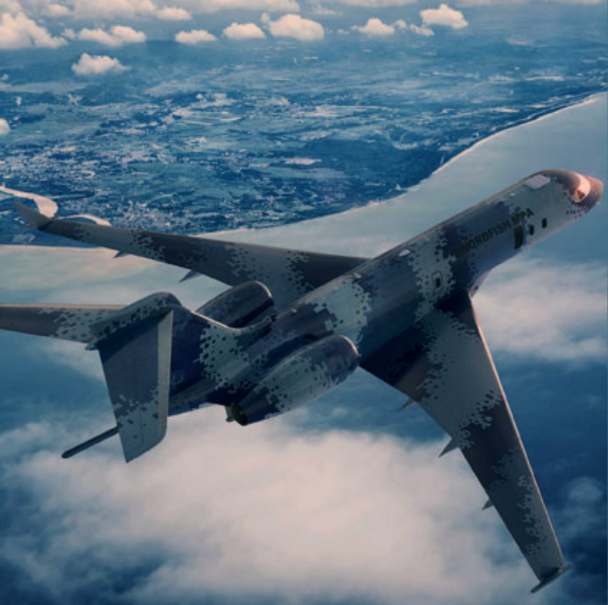April 3, 2020 | International, Aerospace
A la recherche de l'IA hybride
Vice-président recherche, technologie, innovation du groupe Thales, David Sadek intervenait jeudi 24 octobre à Toulouse au Forum Innovation IA, un événement organisé par Sciences et Avenir pour le groupe Challenges. Explicabilité, validité, intégrité... " Pour une IA de confiance " : c'était l'intitulé de l'intervention de David Sadek, le vice-président recherche, technologie, innovation du groupe Thales. "Nous aimerions tous pouvoir toujours faire confiance à tous nos outils technologiques. Mais en réalité tout dépend du contexte. Dans le cas des outils reposant sur l'IA, si Netflix me recommande un film que je trouve détestable, ce n'est pas bien grave, on s'en remettra. Mais dans le cas des systèmes critiques tels que l'on en conçoit régulièrement chez Thales pour des applications défense, espace et aéronautique, la question de la confiance est primordiale". David Sadek énonce trois impératifs, qui sont autant d'axes stratégiques de la feuille de route IA chez Thales, pour aller vers cette " IA de confiance ". Pour qu'une application de l'IA soi digne de confiance, il faut d'abord qu'elle soit capable d'expliquer. Si elle se contente de proposer ou décider sans être capable de dire pourquoi et comment elle est arrivée à cette proposition ou décision, la défiance s'installera. Elle doit donc être capable de répondre à la question : " Pourquoi ? ". "Si par exemple un copilote IA recommande au pilote humain de virer à 45°, et que ce dernier demande " pourquoi ", le copilote doit pouvoir répondre par exemple : " parce qu'il y a un problème météo (ou une menace ...) droit devant ". Il ne s'agit pas de simplement tracer la décision, de pouvoir indiquer à ses concepteurs quels neurones, quelles couches de neurones, ont fait pencher la balance dans un sens ou un autre, mais bien d'expliquer dans une langue compréhensible immédiatement par le pilote". Ce qui indique qu'à l'aspect intelligence artificielle s'ajoute celui de " l'interaction homme-machine ". IA connexionniste et IA symbolique Cela implique, en restant sur cet exemple, une capacité de compréhension et de génération du langage naturel. Mieux, le pilote appréciera de pouvoir dialoguer dans un langage mixte, reposant sur l'oral et le geste (pour désigner un point sur une carte, etc.). Deuxième impératif selon David Sadek : il faut pouvoir démontrer la validité d'une application de l'IA. C'est-à-dire sa conformité aux spécifications. "Le système développé doit faire tout ce l'on attend de lui et rien que ce que l'on attend de lui. Ce qui suppose que l'on sache spécifier très proprement". On connait l'exemple d'un jeu de bataille navale, un " serious game " destiné à former des officiers de la marine, qui gagnait à tous les coups, parce qu'il sacrifiait systématiquement chaque vaisseau touché, pour ne pas ralentir la flotte. Aucune règle ne prévoyait, n'interdisait ce cas de figure, passablement inacceptable. Troisième impératif pour une " IA de confiance ", selon David Sadek, la responsabilité des systèmes reposant sur l'IA. C'est-à-dire leur conformité aux cadres légaux, réglementaires et moraux. On connait le tendon d'Achille des réseaux de neurones : ce sont des boîtes noires, on voit ce qui entre et ce qui sort, mais on ne sait pas (trop) ce qu'il se passe à l'intérieur. C'est pourquoi David Sadek insiste sur le fait qu'il faut s'intéresser aussi à " l'autre IA ", l'IA symbolique, celle qui repose sur des règles et des raisonnements et qui s'oppose à l'IA connexionniste des réseaux de neurones. Cette IA symbolique, qui fait moins les gros titres, qui n'a pas connu les progrès fulgurants de l'IA des réseaux de neurones, est plus à même de répondre à ces trois exigences : expliquer, valider, responsabilité. C'est pourquoi la réponse à cette triple exigence passe sans doute, entre autres, par " l'IA hybride ", une IA tirant parti de ces deux branches de l'intelligence artificielle. Par Pierre Vandeginste https://www.sciencesetavenir.fr/high-tech/intelligence-artificielle/ia-pvdg_138526







